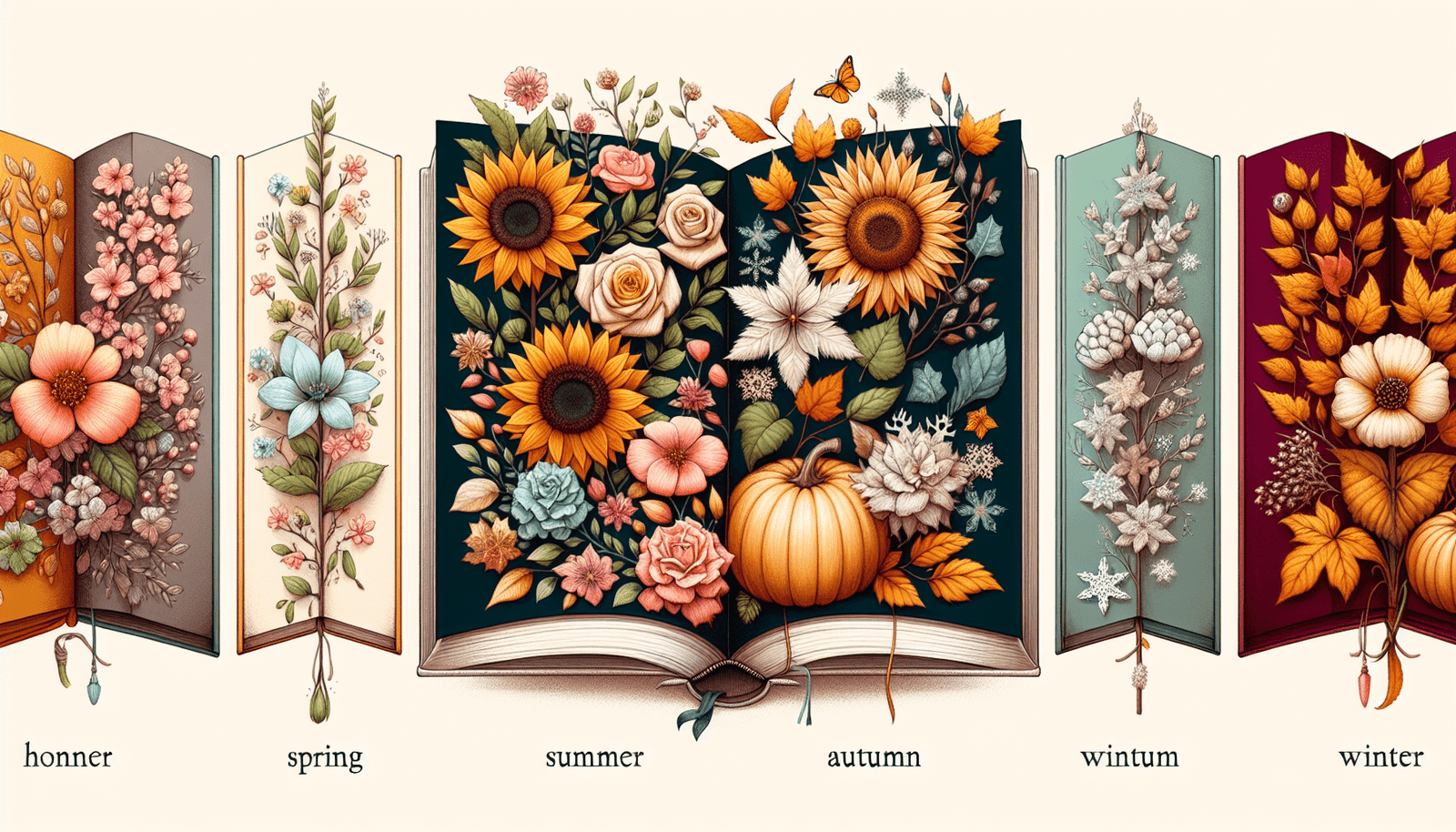In the dynamic world of book publishing, understanding seasonal trends can give you a significant edge, particularly when it comes to designing eye-catching covers. “What Are the Best Tools for Analyzing Seasonal Trends in Book Covers?” equips you with the most effective tools to stay ahead of the curve. Delve into methods that range from data analytics platforms and trend forecasting tools to social media insights, all designed to help you create compelling covers that resonate with readers year-round.
Have you ever wondered how book covers change with the seasons? If you’re intrigued by design or involved in the publishing industry, analyzing seasonal trends in book covers can be quite fascinating. Understanding these patterns can provide valuable insights for authors, designers, and marketers alike. So, what are the best tools for this intriguing task?
Why Analyze Seasonal Trends in Book Covers?
Before diving into the tools, let’s explore why you might want to analyze seasonal trends in book covers. Visual elements play a crucial role in attracting readers. Just like how certain styles become popular in fashion during specific seasons, book covers also exhibit seasonal design trends. Whether it’s the pastel tones of spring or the warming hues of autumn, these trends can influence book sales and reader engagement.
Analyzing these trends can help:
- Authors craft better marketing strategies for their releases.
- Designers create covers that resonate with the current market.
- Publishers make intelligent decisions about cover designs for different genres and target audiences.
Key Factors in Seasonal Trends
Before we dive into the tools, it’s essential to identify the factors that affect seasonal trends in book covers. These typically include:
- Color Schemes: Different seasons often bring different color palettes.
- Imagery: Certain icons, symbols, or images become popular during specific times of the year.
- Typography: The style and size of fonts can vary by season.
- Themes: Holidays, events, and seasonal changes influence cover themes.
Understanding these components will help you navigate through the various tools more effectively.
Best Tools for Analyzing Seasonal Trends
Google Trends
Google Trends is a versatile tool that allows you to explore the popularity of specific search terms over time. While it’s often used for keyword research, it can also provide insights into seasonal trends.
How to Use Google Trends
- Search Terms: Start by entering relevant search terms like “spring book cover,” “summer book cover,” etc.
- Time Frame: Select a suitable time frame, preferably over multiple years, to observe consistent trends.
- Interest Over Time: Check the “interest over time” graph to identify any peaks or valleys during specific seasons.
This data can give you a general idea of how interest fluctuates, which can be linked to seasonal design elements.
Pinterest Analytics
Pinterest is a treasure trove for visual inspiration, making Pinterest Analytics particularly valuable for identifying design trends.
How to Use Pinterest Analytics
- Business Account: Ensure you have a Pinterest business account to access analytics.
- Analyze Pins: Look at the performance of pins related to book covers during different seasons.
- Trend Data: Pay attention to which types of book covers get more saves, shares, and clicks during specific times of the year.
With Pinterest Analytics, you can identify which design elements are more popular during particular seasons, guiding you in your own creative process.
Adobe Color CC (Adobe Color Wheel)
Colors often dominate the first impression of a book cover. Adobe Color CC allows you to explore different color schemes and see which ones are trending.
How to Use Adobe Color CC
- Create Palettes: Use the color wheel to create various color palettes.
- Seasonal Colors: Search for palettes tagged with season-related keywords or create combinations based on traditional seasonal colors.
- Export and Test: You can export these palettes to test them in your design software and see how they work with your book cover design.
This tool helps in aligning the colors of your book cover to the seasonal trends, giving it a timely and appealing look.
Canva Trends Library
Canva offers an extensive library of design elements and trend insights that can be crucial for book cover design.
How to Use Canva Trends Library
- Trend Report: Browse through Canva’s annual trend reports to understand current and upcoming trends.
- Template Search: Look for book cover templates with high engagement rates during specific seasons.
- Customize: Use these templates as a foundation and customize them to fit your unique style and requirements.
Canva’s library can provide a plethora of ideas and insights, making it easier to spot and follow seasonal design trends.
Nielsen BookScan
If you are looking for data that directly relates to book sales, Nielsen BookScan can be an invaluable resource.
How to Use Nielsen BookScan
- Sales Data: Access sales data to see how various book covers have performed during different seasons.
- Trend Analysis: Compare the performance of books with different cover designs over periods that coincide with seasonal changes.
- Historical Data: Use historical data to map out how seasonal trends have evolved over the years.
Nielsen BookScan provides hard numbers on what has sold well, helping you correlate book cover designs with sales performance by season.
Book Cover Archive
The Book Cover Archive is a curated collection of book cover designs, making it a fantastic resource for inspiration and trend analysis.
How to Use the Book Cover Archive
- Search Filters: Use filters to look for book covers from specific periods.
- Seasonal Analysis: Manually analyze which designs were popular during certain seasons.
- Historical Context: Understand the historical context behind certain trends and how they’ve evolved.
Though this requires manual analysis, it offers a rich, curated collection that can significantly aid in understanding seasonal trends.
Social Media Listening Tools
Social media platforms like Instagram, Twitter, and Facebook are gold mines for understanding current trends through user engagement and feedback.
How to Use Social Media Listening Tools
- Setup Alerts: Use tools like Hootsuite or Brandwatch to set up alerts for relevant hashtags like #SpringReads or #WinterBooks.
- Monitor Engagement: Analyze which book covers are getting the most likes, comments, and shares during specific seasons.
- User Sentiment: Understand the sentiment behind the engagement to gauge overall perception.
Social media listening can offer real-time feedback on what people are interested in, helping you tweak your designs seasonally.
Trend Hunter
Trend Hunter is a leading source of consumer trends and insights. It can help you stay ahead of the curve by identifying emerging trends in book cover designs.
How to Use Trend Hunter
- Vertical Search: Use their search feature to focus on publishing and book cover trends.
- Reports and Articles: Read relevant reports and articles to identify seasonal patterns.
- Custom Insights: Utilize their custom insights service to get tailored trend analysis.
Trend Hunter offers a more analytical approach, helping you understand the broader context of trends and how they apply to book covers.
Publishers’ Weekly
Publishers’ Weekly is another excellent resource for industry-specific insights, often featuring trend reports and articles on book cover designs.
How to Use Publishers’ Weekly
- Trend Reports: Keep an eye on articles and reports focused on book design.
- Seasonal Insights: Look for mentions of seasonal trends and how they impact cover designs.
- Interviews and Case Studies: Read interviews with designers and publishers for firsthand insights.
This resource can provide in-depth industry knowledge and keep you updated on current and emerging trends.
Data Visualization Tools
Tools like Tableau or Microsoft Power BI can help you visualize data trends effectively. If you have gathered quantitative data from other sources, these can be powerful in making sense of it.
How to Use Data Visualization Tools
- Import Data: Bring in data from sources like Google Trends, Nielsen BookScan, and social media analytics.
- Create Dashboards: Develop interactive dashboards to visualize seasonal trends.
- Analyze Patterns: Use visualizations to identify clear patterns and correlations.
These tools make it easier to see the bigger picture and derive actionable insights from complex datasets.
Integrating Insights for Effective Design
Once you’ve gathered data and insights from these various tools, the next step is integrating this information into your design process. Here are some steps to consider:
- Identify Core Trends: Look for common patterns across all the tools.
- Mood Boards: Create mood boards representing these trends to visualize your design concepts.
- Prototype Testing: Develop several prototypes and test them with focus groups or through A/B testing.
- Iterate and Refine: Use feedback to refine your designs, ensuring they stay aligned with seasonal trends.
Conclusion
Analyzing seasonal trends in book covers is a multifaceted task that combines creativity with analytical skills. By leveraging a variety of tools like Google Trends, Pinterest Analytics, Adobe Color CC, and more, you can uncover valuable insights that help you create appealing, seasonally-appropriate book covers. Always remember, the goal is to understand your audience better and design covers that resonate with them, boosting engagement and ultimately sales.
So, next time you’re drafting a book cover, consider the season, use these tools, and let the trends guide your creativity!



